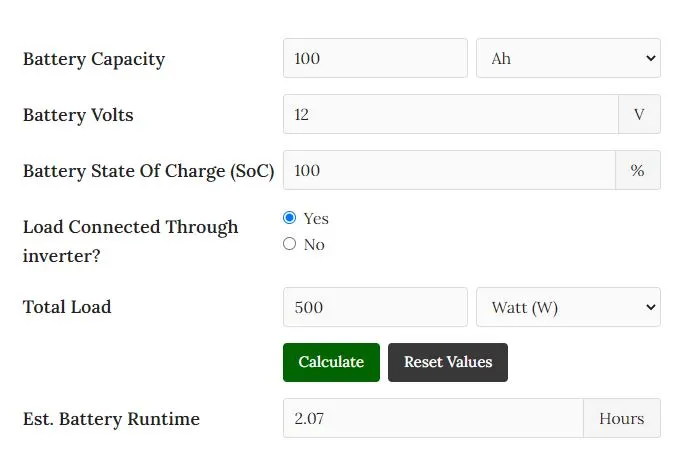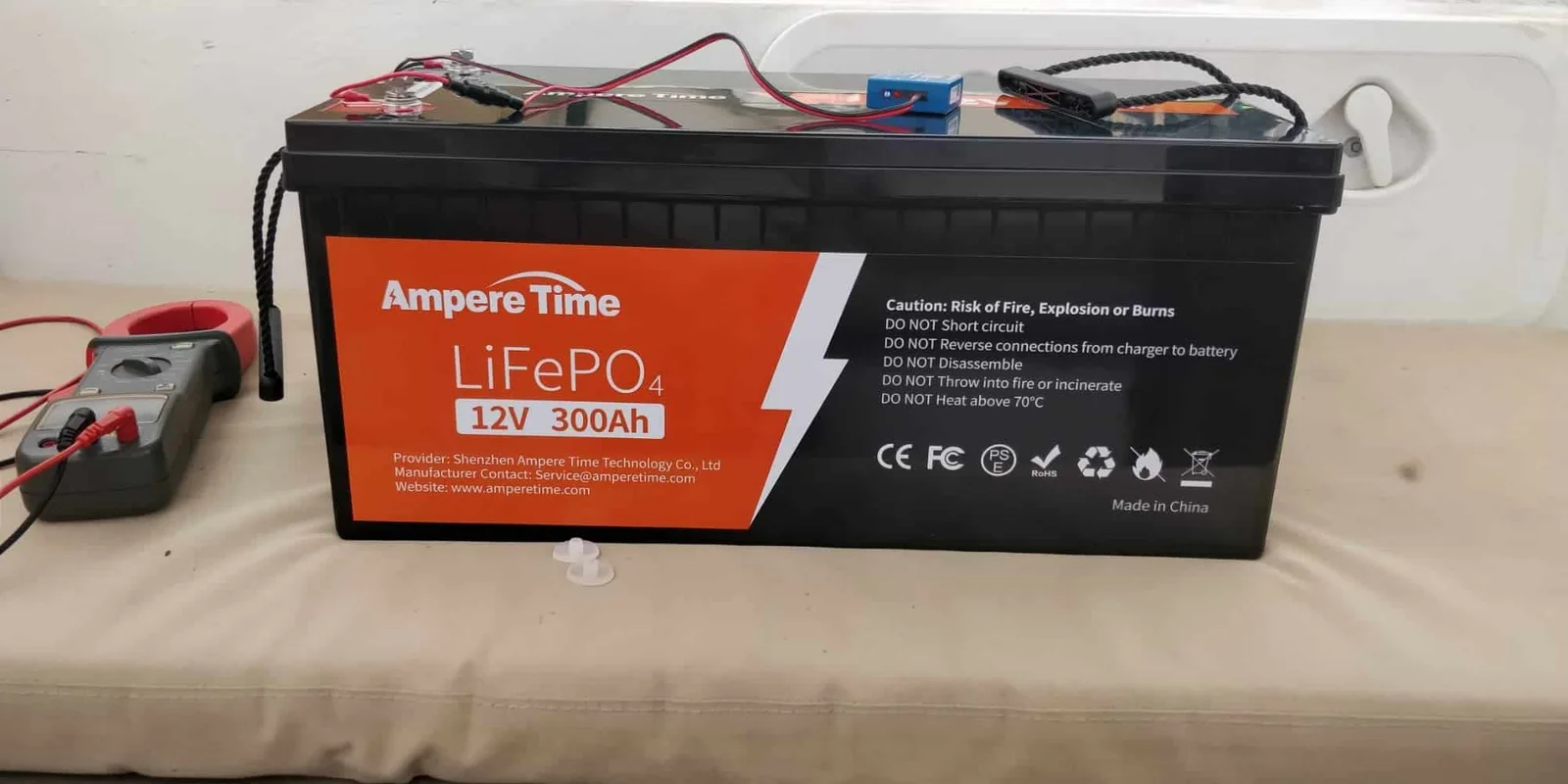Use our lithium battery runtime (life) calculator to find out how long your lithium (LiFePO4, Lipo, Lithium Iron Phosphate) battery will last running a load.
lithium battery life (Runtime) calculator
Note: Use our solar panel size calculator to find out what size solar panel you need to recharge your battery.
Calculator assumption
- Lithium battery discharge efficiency: 95%
(Source) - Inverter efficiency: 90%
how to use Lithium Battery runtime calculator?
1- Enter the battery capacity and select its unit. The unit types are amp-hours (Ah), and Miliamps-hours (mAh). Choose according to your battery capacity label.
2- Enter the battery voltage. It'll be mentioned on the specs sheet of your battery. For example, 6v, 12v, 24, 48v etc.
3- Optional: Enter battery state of charge SoC: (If left empty the calculator will assume a 100% charged battery). Battery state of charge is the level of charge of an electric battery relative to its capacity. For example, enter 80 for an 80% charged battery.
4- Is your output load connected through an inverter? If you're using a solar battery and running an AC load, it should be connected through an inverter.
5- Enter the total output load and select its unit. The units are, watts (W), and kilowatts (kW = 1000 watts).
Click "Calculate" to find the lithium battery runtime.
Example: 100Ah lithium battery runtime

100ah lithium battery will last about 2 hours while running 500 watt AC load.
how to calculate lithium battery runtime?
I've seen many ways to calculate the battery runtime online. Which are easy but least accurate. So I'm gonna share the most accurate and difficult method.
Formula #1 (Best For Large Capacity Batteries): Battery runtime = (Battery capacity Wh × battery discharge efficiency × inverter efficiency, if running AC load) ÷ (Output load in watts).
Formula #2 (Best For Small mAh Batteries): Battery runtime = (Battery capacity Ah/mAh × battery discharge efficiency) ÷ (Output load in amps/milliamps).
formula 1: example
Let's suppose,
- Battery capacity: 12v 50Ah (12 × 50 = 600Wh)
- Battery discharge efficiency - Lithium battery: 90-95%
- Output load: 400 watts
- inverter efficiency: 90%
Battery runtime = (600 × 95% × 90%) ÷ (400)Battery runtime = (513) ÷ (400)Battery runtime = 1.2 hoursformula 2: example
Let's take iPhone 14 pro max as an example,
- Battery capacity: 4323 mAh
- Battery discharge rate - Lithium battery: 90-95%
- Average phone battery usage when the screen is On: 220 mA
Battery runtime = (4323 × 95%) ÷ (220)Battery runtime = (4106) ÷ (220)iPhone Battery runtime = 18.6 hoursLithium battery maximum discharge rate?
Rechargeable batteries are designed to be charged/discharged at a limited current rate to increase the battery lifespan or life cycles.
Lithium batteries can be discharged at 1C (for example, 100 amps for a 100Ah battery).
Discharging your battery at a higher rate than what is recommended will increase the heat in battery cells. As a result, your battery will drain quickly.
For instant, if you're running a 100A load on a 100Ah battery, it will last 35-40 minutes instead of 1 hour.
Note: If the load capacity is mentioned in watts, make sure it should not exceed the total watt-hour (battery Ah x Battery volts) capacity of the battery.
How many hours does a lithium battery last?

Calculating how many hours your battery will last while running a load is not an easy task. There are so many factors to consider for an accurate value.
You can use our lithium battery run time calculator (at the top of the page) or formulas to get the estimated runtime.
- Lithium (LiFePO4) Battery Charge Time Calculator
- Solar Battery Charge Time Calculator
- How Long Will A 100Ah Battery Last? + Calculator
I hope this post was helpful to you. Contact Us if you still have any queries or advice. Thank you!



